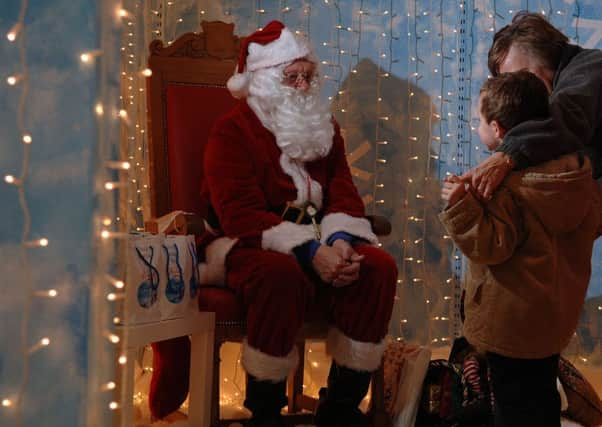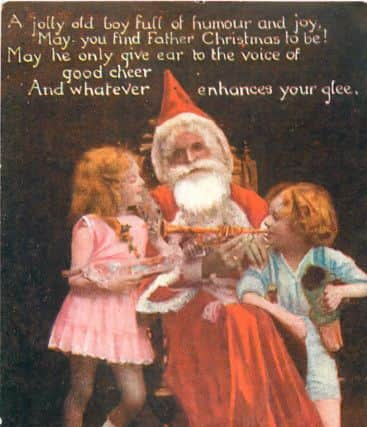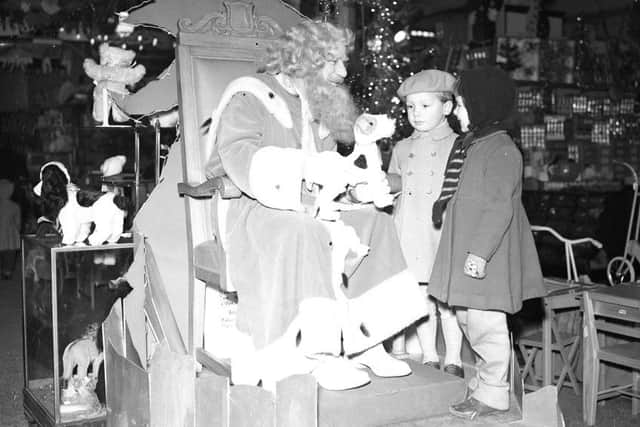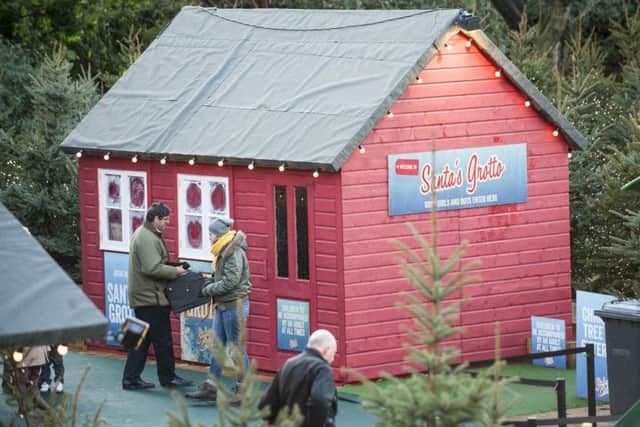Can Edinburgh claim the world's first Santa's Grotto?


Entitled “Christmas Fairyland”, historians say the Bon Marche grotto opened in 1879, making it the world’s earliest example.
Now, far be it from me to refute the official version of events and “bagsy” such a jolly distinction for Auld Reekie - I’m fully aware of how ridiculous that sounds - but there is genuine evidence to suggest that the home of the first ever Santa’s Grotto was a little closer to Morningside than Merseyside.
Advertisement
Hide AdAdvertisement
Hide AdA wade through the extensive archives of The Scotsman and Edinburgh Evening Courant reveal that in 1859 - a full twenty years earlier than Liverpool’s Bon Marche - an Edinburgh store hosted a Christmas event which, based on its thorough description, I feel can quite fairly and legitimately be labelled as a ‘Santa’s Grotto’.


During the month of December 1859 the “large and splendid” premises of F. Laule at 79 George Street, Edinburgh was transformed into a magical fairyland for its ‘Grand Fancy Fair’.
The shop was filled with a forest of “superbly decorated” Christmas trees, and in the centre, a single lofty pine, its branches loaded with “beauteous produce, refulgent with glistening spheres and bedecked with gold and silver”.
To top it all off, “Good Old FATHER CHRISTMAS” himself was there with his little helpers - described here as “attendant nymphs” - and “wonderful inexhaustible Christmas Box” to distribute gifts to both young and old from a spinning wheel of fortune.


Advertisement
Hide AdAdvertisement
Hide AdIn the evening the Fairy Palace was illuminated by variegated lamps and Chinese lanterns, with the gentle music of Mr Lawrie’s harmonium filling the air.
Hailed as a “triumphant success”, the Christmas Fancy Fair was repeated throughout the 1860s, moving to the Edinburgh Arcade at South St Andrew Street.
Later, during the lead up to Christmas 1870, Houlden Brothers’ of Nicolson Street was decorated with a “Fairy Christmas Tree” and “Magic Grotto” - which appears to be the first mention of a Christmas grotto in Edinburgh.


The newspaper articles serve to show that the global yuletide tradition of inviting children to receive gifts from Santa Claus in a store filled with festive decorations stretches back significantly further than 1879.
Advertisement
Hide AdAdvertisement
Hide AdWas Edinburgh truly the first to do it? That’s very difficult to say, but based on actual material evidence it’s clear that the Capital can stake a lawful claim as being a pioneer in the long-established Christmas Grotto tradition. Time to rewrite the history books, I say.
Today, the premises at 79 George Street is occupied by Café Andaluz, a Spanish tapas bar. By pure chance, seven potted plants resembling miniature Christmas trees adorn its frontage.
DOWNLOAD THE EDINBURGH EVENING NEWS APP ON ITUNES OR GOOGLE PLAY
